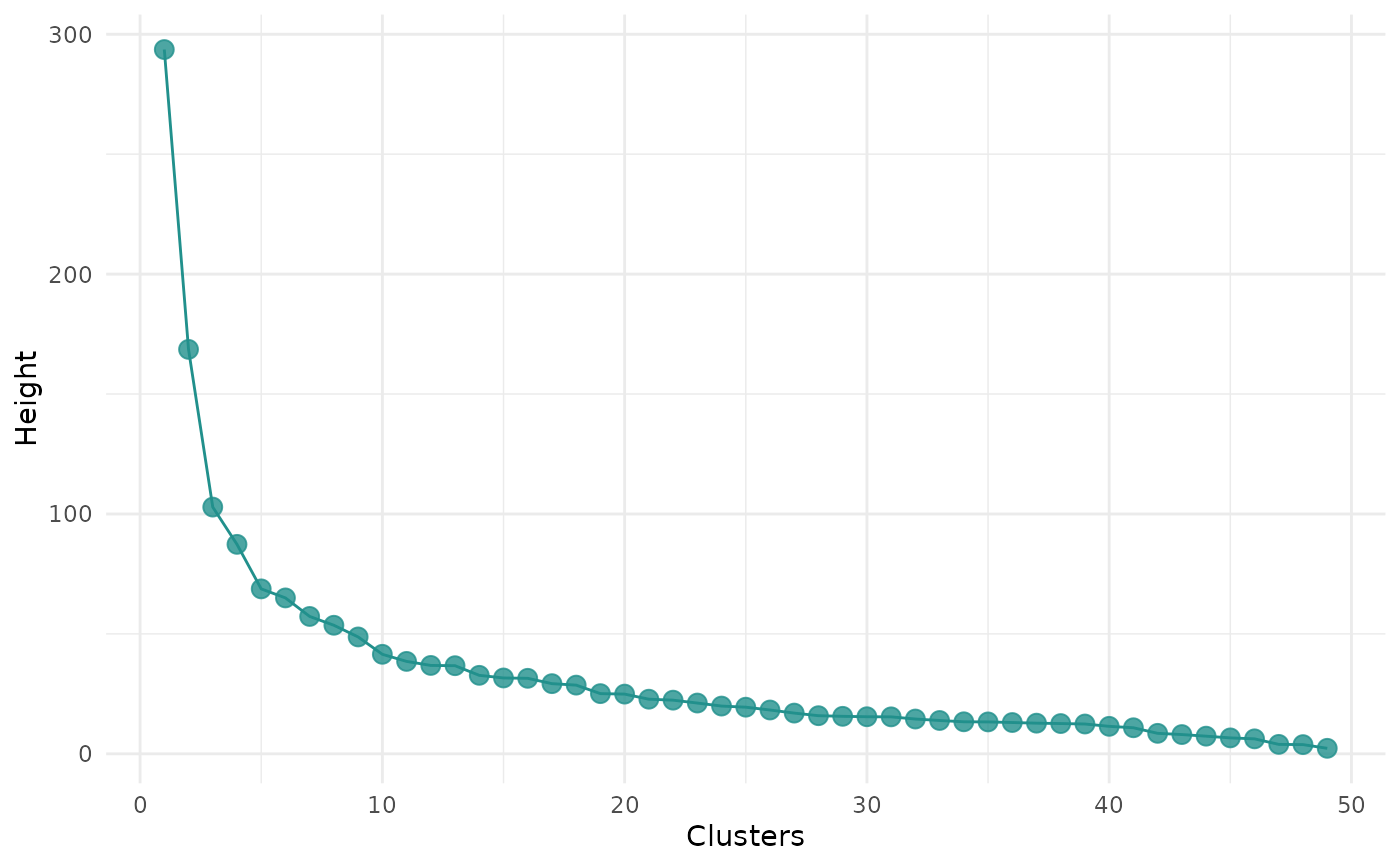
Plots for Hierarchical Clustering Learners
Source:R/LearnerClustHierarchical.R
autoplot.LearnerClustHierarchical.RdVisualizations for hierarchical clusters.
The argument type controls what kind of plot is drawn.
Possible choices are:
"dend"(default): Dendrograms using ggdendro package."scree": Scree plot that shows the number of possible clusters on the x-axis and the height on the y-axis.
Usage
# S3 method for class 'LearnerClustHierarchical'
autoplot(
object,
type = "dend",
task = NULL,
theme = theme_minimal(),
theme_dendro = TRUE,
...
)Arguments
- object
(mlr3cluster::LearnerClustAgnes | mlr3cluster::LearnerClustDiana | mlr3cluster::LearnerClustHclust).
- type
(character(1)):
Type of the plot. See description.- task
(mlr3::Task)
Optionally, pass the task to add labels of observations to ahclustdendrogram. Labels are set via the row names of the task.- theme
(
ggplot2::theme())
Theggplot2::theme_minimal()is applied by default to all plots.- theme_dendro
(
logical(1))
IfTRUE(default), the special dendrogram theme from ggdendro package is used in plot"dend". Set toFALSEto use the theme passed intheme.- ...
(ignored).
Examples
if (requireNamespace("mlr3")) {
library(mlr3)
library(mlr3cluster)
library(mlr3viz)
task = tsk("usarrests")
# agnes clustering
learner = lrn("clust.agnes")
learner$train(task)
autoplot(learner)
# diana clustering
learner = lrn("clust.diana")
learner$train(task)
autoplot(learner)
# hclust clustering
learner = lrn("clust.hclust")
learner$train(task)
autoplot(learner, type = "scree")
}
